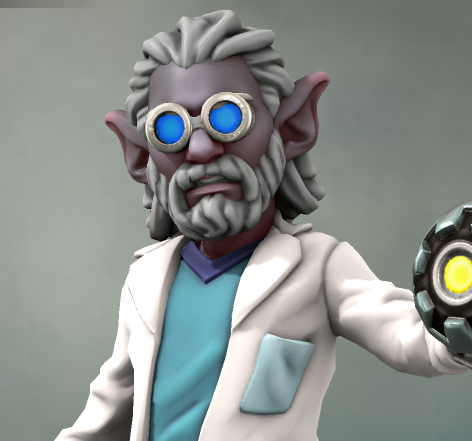
Thin, single stranded, kelp-like plants that anchor themselves to rocks on the sea floor. The males tend to be predominantly brown in colour, while the female plants are more green. The female plants also generate floating lily-pad like leaves, called Caps; the purpose of which, has yet to be discovered.
This plant can reproduce asexually, via budding (this is often carried out by farmers) or sexually (using fish that shelter in them to pollinate their fruits). The reproductive material of the plants is contained in the Brucc layer (a thin slime layer that is used to defend the plant), which allows certain fish to transport it between mature individuals.
After the fruit has been pollinated, it is released and floats quickly to the surface. From here, it will float for about a week before losing its buoyancy and sinking to the ocean floor. This allows the Braccka Plants to expand their forests and reduce intraspecific competition.
These plants mature within four months of the seed pod sinking and anchoring to stones on the seabed. Once the roots have taken hold, the fruit is digested by the plant, and the outer skin dissolves.
After this, the plants grow quickly and mature in approximately eight months, allowing for rapid colonization of new areas.
These plants prefer temperate ocean climes and rocky sea floors. They cannot colonize areas with gravelly, silty, or sandy seabed's, as large rocks are essential for them to anchor on. On Eukrosh, they are found along certain parts of the the Omíchli Coast and across most of the eastern coast of Kahi'ore.
This plant passively filters most of the nutrients it needs from the water it resides in, and undergoes photosynthesis for most of the day.
To protect itself and it's fruits from predators, the plant produces a slime layer. This slime layer - known as Brucc - contains a fairly strong aphrodisiac, if a creature is exposed in sufficient volumes it can cause cardiac arrest.
These plants have a stable seasonal growth and produce fruit three times a year. The Braccka Plant has a lifespan of approximately four years, at which point its roots wither, it is released, and it decays along the surface of the ocean.
Braccka has not been domesticated, as it is has extremely aggressive defense mechanisms. Farmers have been attempting to create strains that do not produce the Brucc layer. These efforts have thus far yielded poor results, as many local fish will eat the plants when it isn't protected by this slime layer.
This plant is farmed for its fruit, Brucc and strands.
The fruit of this plant has a lime-green outer skin, that is about an inch thick. The fruit is similar in shape and size to coconuts. The edible part of the fruit within is black in colour, and is a solid mass surrounding a heavy seed. These fruits float for about a week after being released from the parent plant, and then sink to the ocean floor. This aids in expanding forests. When opening the fruit, check the colour of the meat. If it is black or grey it is safe to eat. It is unpalatable and causes vomitting/nausea if it has "bled" and become a faint red color.
The Brucc of the plant is also used as a primary component of Breva, a powerful psychedelic drug, that also acts as a spiritual and performance enhancer. Very few people risk harvesting this slime layer, as there is a great amount of risk to personal healthy, and it is illegal to do so.
Lastly, once a plant has died, the long, leafy tendrils can be harvested and dried in the sun. This causes them to smell much like rotten seaweed, but unlike kelp, these strands act more like a weak, silk fabric. It is absorbent, and slow drying, making it excellent for bandages.
They are distributed in clusters, called 'forests', along the south-eastern coast of Eukrosh.
Some fish species, such as clown fish, congregate in these forests, as they are immune to the effects of Brucc. In exchange for the shelter the plant provides, the clown fish keep the plants clean of small organisms that might attempt to eat the plants leaf-strands.
Lifespan
3 years.
Average Height
10.3 - 14.4 feet.
Body Tint, Colouring and Marking
Typically these plants are a semi-transparent kelp-brown colour, with sea green blotches.
Related Materials
Comments
Please Login in order to comment!







Very cool plant. I enjoy kelp and kelp forests. my only question is there anything larger that naturally eats it, possibly to gain the properties or harvest the Brucc. Thinking of the urchins that can decimate actual kelp forests if the otter population gets too decimated. but that is my biology/ecology focused mind. Great work.
I appreciate the feed back! I like to think that this aggressive defense is similar to the trichomes and sap of Hogweed. Its super aggressive, and to the best of my knowledge, nothing has found a way to work around it (yet).